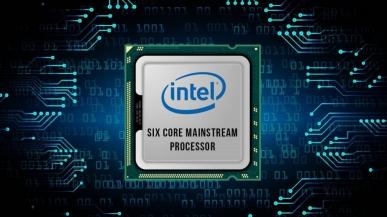Intel blocking IT --- Blokada procesorów Intel Informatyka
English version

With the introduction of a new generation of CPUs from the Coffee Lake family, Intel simultaneously ruled out the owners of motherboards with chipsets from line 100/200 with the possibility of mounting them in their PC. The company's translations from the beginning were quite vague - although the processors still use the same stand, that is LGA 1151, the designers assured that they made "important changes in its structure", adapting it to the requirements in terms of power consumption. The problem is that the TDP chip from the Coffee Lake family is practically no different from the models from the seventh (Kaby Lake) and sixth (Skylake) generation, however, officially the latest processors from Californian Santa Clara company need a motherboard with a chipset for proper operation Z370.

This topic, however, did not escape the attention of equipment enthusiasts and overclockers - a group of enthusiasts decided to take the weakest coffee from the Coffee Lake family, i.e. Core i3-8100, and try to run it on one of the cheaper AsRock boards with 100 and 200 lines. they are the most satisfactory - it turned out that in terms of architecture, Intel's new processors are compatible with the design of the LGA1151 base and there are no technical contraindications not to launch quad-core Coffee Lake representatives on older "mobo". The problem lies in the software blocking of Intel set at the BIOS level, which is responsible for signaling technical incompatibility between the two components. After they were removed, the processor achieved full efficiency and a similar effect was obtained also in the Core i3-8350K model. What's more, the whole process is not particularly difficult - the developers have prepared a guide where they step by step show how to run the latest Intel processors on older chipsets. Of course, achieving the same effect in the more efficient, six-core Core i5 / i7 processors will certainly be a much more difficult task (if not impossible due to higher TDP), but this example shows that the hardware limitations imposed by Intel have in this the accident has only one purpose - to force a potential customer to buy a new CD, which often brings with it the need to upgrade virtually the whole PC.
Wersja Polska
Wprowadzając nową generację procesorów z rodziny Coffee Lake, Intel jednocześnie wykluczył posiadaczy płyt głównych z chipsetami z linii 100/200 z możliwości zamontowania ich w swoim pececie. Tłumaczenia koncernu od początku były dość pokrętne – choć procesory wciąż korzystają z tej samej podstawki, czyli LGA 1151, to projektanci zapewniali, że dokonali „ważnych zmian w jej strukturze”, dostosowując ją do wymagań w zakresie poboru prądu. Problem w tym, że TDP układów z rodziny Coffee Lake praktycznie w ogóle nie różni się od modeli z siódmej (Kaby Lake) oraz szóstej (Skylake) generacji, niemniej jednak oficjalnie najnowsze procesory firmy z kalifornijskiego Santa Clara do poprawnego działania potrzebują płyt głównych z chipsetem Z370.

Ten temat nie uszedł jednak uwadze miłośnikom sprzętu i overclockerom – grupka pasjonatów postanowiła wziąć na warsztat najsłabszy egzemplarz z rodziny Coffee Lake, czyli Core i3-8100, i spróbować uruchomić go na jednej z tańszych płyt firmy AsRock z układami z linii 100 oraz 200. Efekty są jak najbardziej zadowalające – okazało się, że w kwestii architektury nowe procesory Intela są zgodne pod względem pinów z konstrukcją podstawki LGA1151 i nie istnieją żadne techniczne przeciwskazania, by nie odpalić czterordzeniowych przedstawicieli rodziny Coffee Lake na starszych „mobo”. Problem leży natomiast w programowych blokadach Intela ustawionych na poziomie BIOS-u, które odpowiadają za sygnalizowanie niezgodności technicznej pomiędzy dwoma podzespołami. Po ich usunięciu procesor osiągnął pełną sprawność działania i podobny efekt uzyskano także w modelu Core i3-8350K. Co więcej, cały proces nie jest specjalnie trudny – moderzy przygotowali poradnik, w którym krok po kroku pokazują, jak uruchomić najnowsze procesory Intela na starszych chipsetach. Oczywiście osiągnięcie tego samego efektu w przypadku bardziej wydajnych, sześciordzeniowych procesorów z rodziny Core i5/i7 z pewnością będzie zadaniem znacznie trudniejszym (o ile nie niemożliwym ze względu na wyższe TDP), ale ten przykład pokazuje, że ograniczenia sprzętowe nakładane przez Intel mają w tym wypadku tylko jeden cel – wymusić na potencjalnym kliencie kupno nowej płyty, co często niesie ze sobą konieczność upgrade’u praktycznie całego peceta.